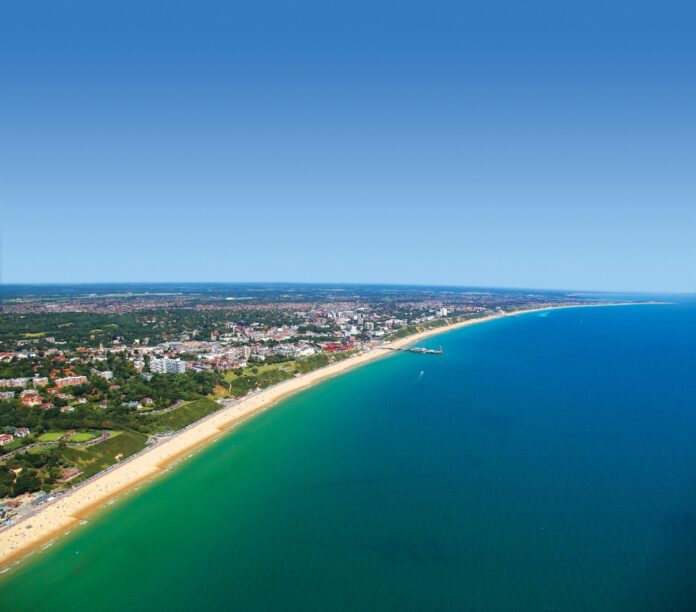People living on Britain’s coast are not being warned of the serious risks they face from rising sea levels, a world expert has told Sky News.
Professor Jim Hall, who is on the prime minister’s Council for Science and Technology and internationally recognised for his work on climate risks, said some coastal communities would disappear in the coming decades.
But little help is being given to existing homeowners to move inland and people buying properties are unaware of their financial gamble.
He said holding back the sea along the entire coastline would be too expensive and the government should instead have an “honest conversation” with coastal communities.
“I don’t think people really recognise the way in which things are going to change in the future,” he said.
“The price of coastal property is not reflecting the risk to which people are exposed.
“Now maybe if people are moving to the coast for their retirement, they are there for a limited amount of time and it’s a perfectly rational thing to do.
“But we can’t expect coastal properties to be there forever.”
According to the Met Office, sea levels around the British coast are likely to rise by around 115cm by the end of the century.
But some scientists say the predictions are too conservative and that accelerating rates of melting of mountain glaciers and the polar ice caps will result in much bigger rises.
When combined with storm surges, the higher water will flood inland and undercut cliffs, causing them to collapse.
‘200,000 homes at risk’
The east and south coast of England are particularly vulnerable because the rocks are made of sand, gravel and clay. But low-lying estuaries countrywide are also at risk.
According to analysis by the University of East Anglia’s Tyndall Centre, 200,000 properties in England could be vulnerable to rising sea levels by 2050.
Yet fewer than 35,000 have been recognised as at risk by official planning documents.
Many communities that face an uncertain future haven’t yet been identified, the researchers warned.
Prof Hall said property surveyors check Environment Agency flood maps during a property purchase, but don’t have access to detailed information on the risks of accelerated sea level rise and coastal erosion.
He added that the Environment Agency had taken a strategic overview of the risk, but engagement with communities was left to overstretched local authorities.
Ultimately it is “the government’s responsibility”, he said.
“These are very emotive issues, understandably. It’s about a lot of people’s properties, in places that they really love.
“So when coastal erosion, coastal flooding, and sea level rise hits the press, it becomes very controversial and local MPs become involved.
“Politically this is very hot to touch and that makes it difficult for central government.”
‘My house trembles’
The Environment Agency has said it will maintain and raise sea defences along coasts of major towns or near key infrastructure, a strategy called “holding the line”.
But the sea will be allowed to invade rural areas with smaller communities.
The village of Happisburgh in Norfolk is one of the most vulnerable in the country. It has lost 40 houses in three decades as the rising sea has cut through the soft cliffs.
When Nicola Bayless’s family bought their house in 2000 they were told it would be safe for 150 years but the sea has advanced so fast she fears it could be gone in 10 – if she’s lucky.
“When the sea is hitting the cliff, the house trembles,” she said. “That’s how close I am.”
“It’s the strength of the sea. You wouldn’t believe how it can just destroy the cliff. It’s just chomping away every time we have a high tide.
“Climate change is happening – you can see that from this. People are quite blinkered inland because they don’t see it every day.”
‘We need a plan now’
The council says it has helped some people relocate, but funding is limited and there’s no national plan for the climate refugees.
Rob Goodliffe, of Coastal Partnership East, which brings together three local authorities in Norfolk and Suffolk, said the cost of rebuilding further inland can be prohibitive.
“We need to get to a point where we have options, so we aren’t just walking into a property and saying: ‘I’m sorry, it has to be demolished because it’s going to be lost over a cliff’,” he said.
“Maybe a scheme where the costs, like the flood risk scheme, are shared across the nation is a way forward.
“We need to have these conversations now, rather than wait and react. We need to plan for the future.”
The government has worked with insurance companies to make flood cover more affordable to properties near rivers and streams.
But it said coastal erosion is a natural process, so there’s no compensation for house owners.
The Department for Environment, Food and Rural Affairs has allocated £36m over six years to trial ways of helping a small number of coastal areas to transition and adapt to a changing climate.
Join us in helping to bring reality and decency back by SUBSCRIBING to our Youtube channel: https://www.youtube.com/channel/UCQ1Ll1ylCg8U19AhNl-NoTg and SUPPORTING US where you can: Award Winning Independent Citizen Media Needs Your Help. PLEASE SUPPORT US FOR JUST £2 A MONTH https://dorseteye.com/donate/







